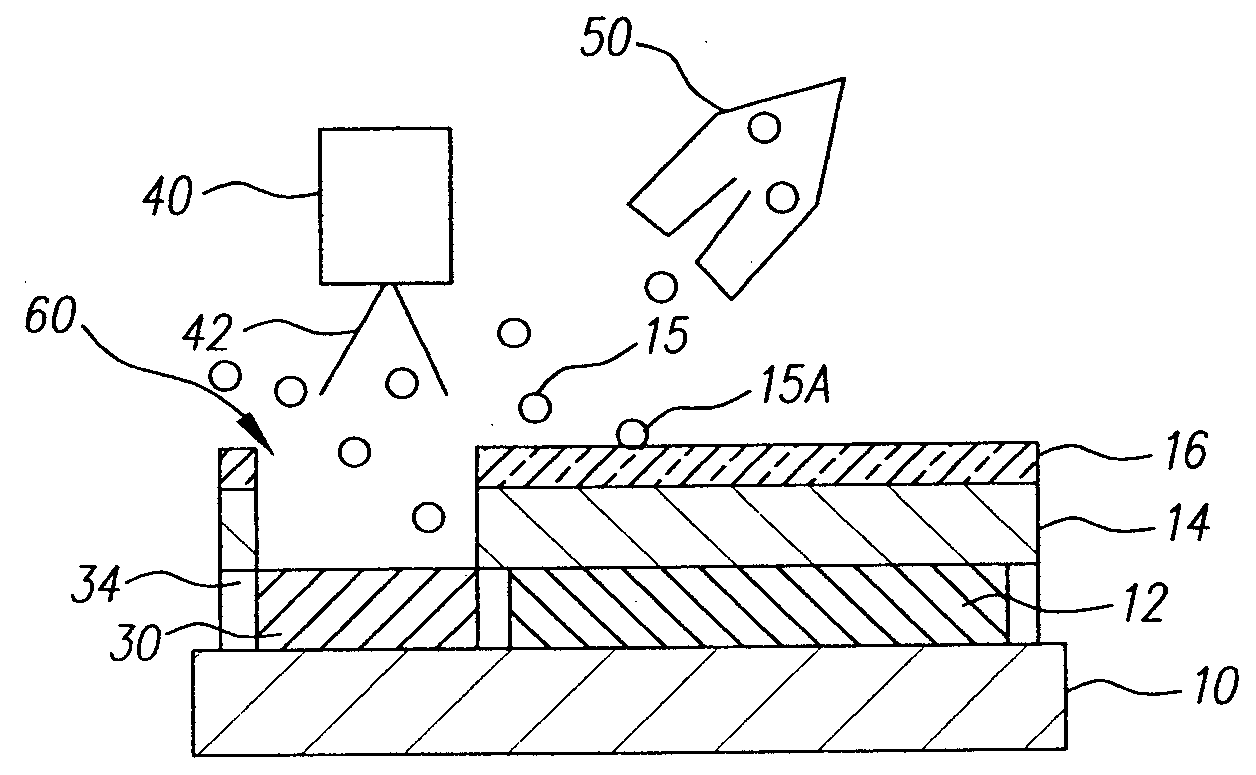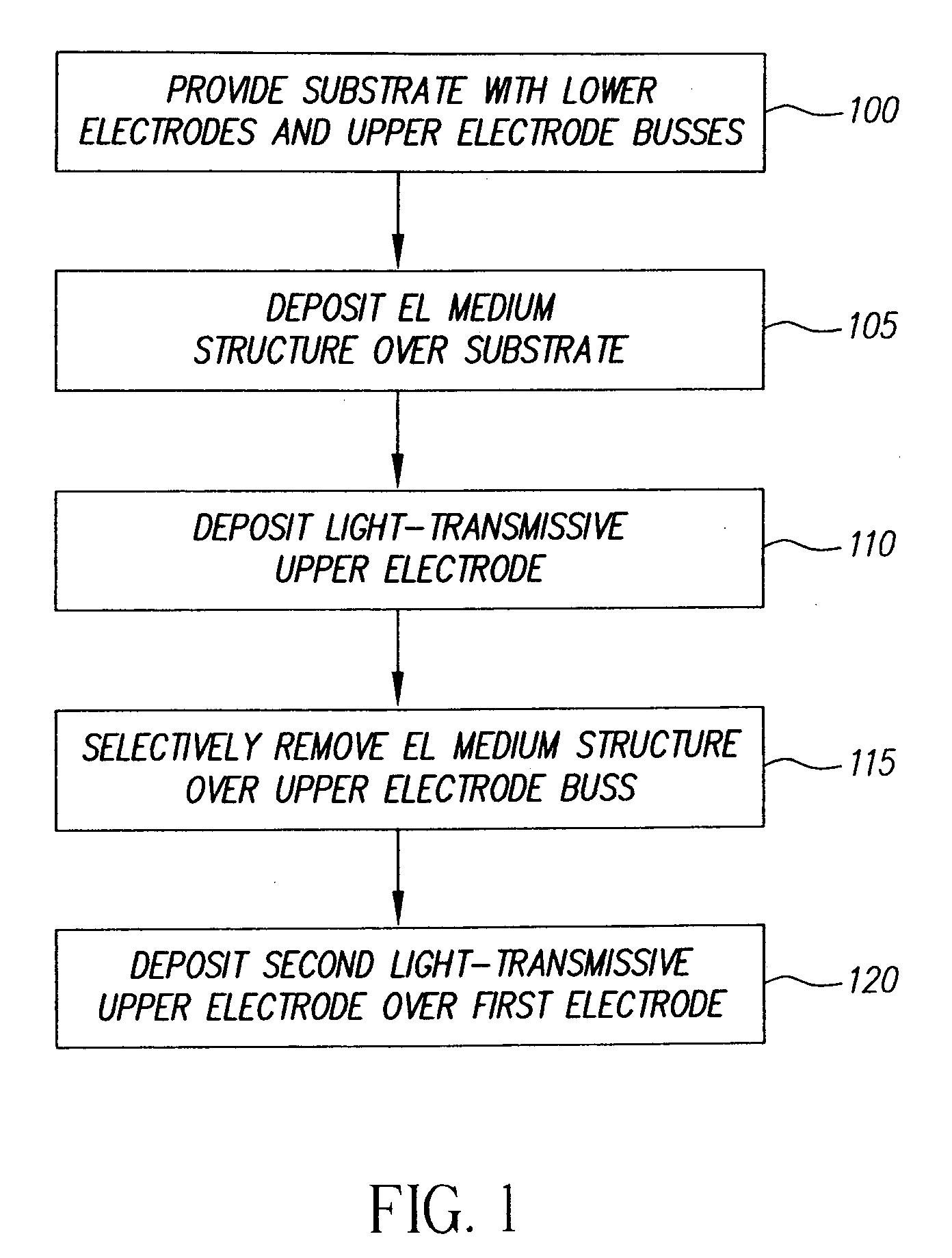Method of making a top-emitting OLED device having improved power distribution
- Summary
- Abstract
- Description
- Claims
- Application Information
AI Technical Summary
Benefits of technology
Problems solved by technology
Method used
Image
Examples
Embodiment Construction
[0034]The present invention is directed to a method of making a top-emitting LED device. In top-emitting LED devices, light is emitted through an upper electrode or top electrode which has to be sufficiently light transmissive, while the lower electrode(s) or bottom electrode(s) can be made of relatively thick and electrically conductive metal compositions which can be optically opaque.
[0035]As used herein, the term “light transmissive” when referring to an upper electrode or top electrode of a top-emitting LED device denotes an optical transmission of 50% or more of light directed perpendicularly at a surface of such electrode. The term “optically opaque” refers to lower electrodes or bottom electrodes, upper electrode busses, bus connectors, and bus connector pads, and denotes an optical transmission of less than 50% of light directed perpendicularly at a surface of such electrically conductive elements.
[0036]The terms “pixel” and “subpixel” are generally used to designate the sma...
PUM
 Login to View More
Login to View More Abstract
Description
Claims
Application Information
 Login to View More
Login to View More - R&D
- Intellectual Property
- Life Sciences
- Materials
- Tech Scout
- Unparalleled Data Quality
- Higher Quality Content
- 60% Fewer Hallucinations
Browse by: Latest US Patents, China's latest patents, Technical Efficacy Thesaurus, Application Domain, Technology Topic, Popular Technical Reports.
© 2025 PatSnap. All rights reserved.Legal|Privacy policy|Modern Slavery Act Transparency Statement|Sitemap|About US| Contact US: help@patsnap.com



